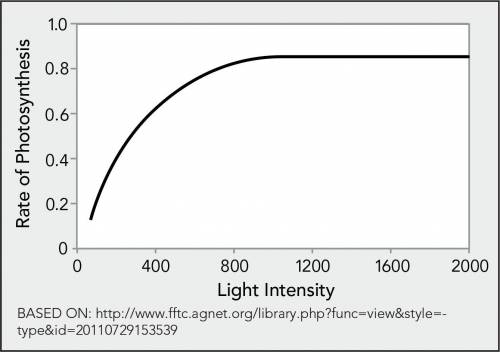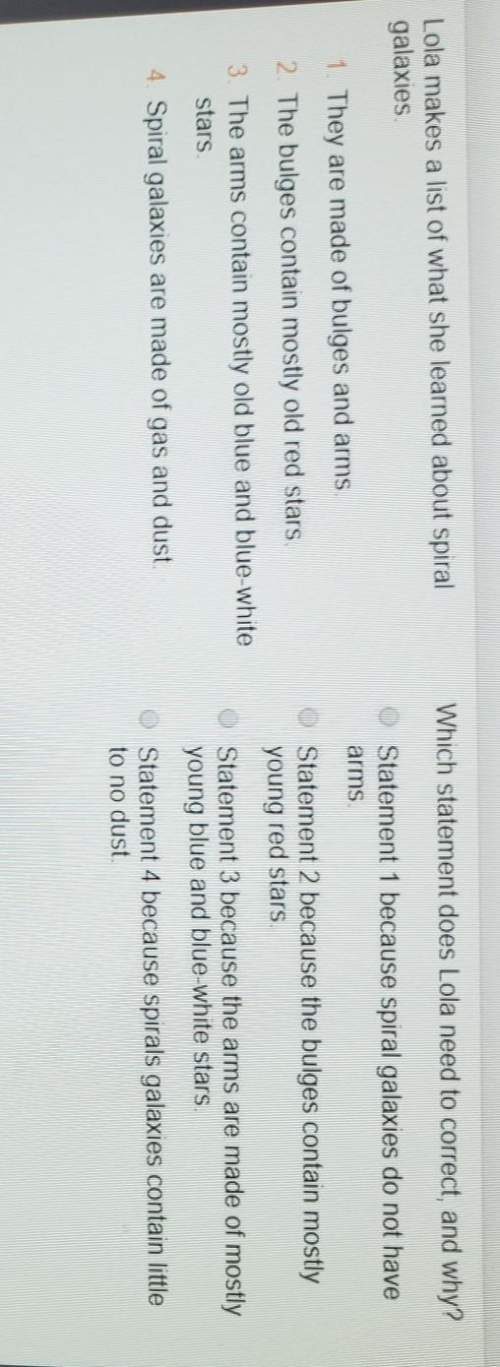
Biology, 06.01.2021 01:00 brooke012002
Susan has just moved into a new house. For some reason, she cannot get the grass to grow in her yard. She decides to grow small amounts of grass inside her house as part of an experiment. The first group of grass is exposed to a light intensity of 400. The second group is exposed to a light intensity of 1200.
Using the graph, which of the following should be expected from Susan’s two groups of plants?
Group of answer choices
The plants at a light intensity of 1200 will produce more oxygen than the plants at 400.
The plants at a light intensity of 1200 will perform only stage 1 of photosynthesis.
The plants at a light intensity of 400 will produce more glucose than the plants at 1200.
The plants at a light intensity of 400 will grow more quickly than the plants at 1200.


Answers: 3
Another question on Biology

Biology, 22.06.2019 03:20
Mrna decodes information from the original dna master plan to build proteins in the during the process of ribosomes.
Answers: 3

Biology, 22.06.2019 04:30
Asap brainliest will be which sentence about protists is accurate? all protists are unicellular and microscopic in nature. they have organelles, so protists are eukaryotic in nature. all protists make their own energy through photosynthesis.
Answers: 1

Biology, 22.06.2019 05:20
Categorize each term as something that is typical of a scientific theory, a scientific hypothesis, or both. makes predictions
Answers: 2

Biology, 22.06.2019 20:30
Our planet has experienced five major extinctions in the four billion year history of life. the first, 450 million years ago, occurred shortly after the evolution of the first land-based plants and 100 million years after the cambrian explosion. the second extinction occurred 350 million years ago, causing the formation of coal forests. next earth experienced two mass extinctions during the triassic period, between 250 and 200 million years ago. the fifth mass extinction occurred 65 million years ago, ending the reptilian dominance of the earth. according to richard leakey, the sixth mass extinction is happening right now. leakey suggests that we, the human race, are the cause. each year, at our hand, approximately 50,000 species vanish from earth. he believes that man is destroying earth at a rate comparable with the impact of a giant asteroid. leakey's statistics indicate that 50% of earth's species will become extinct within the next 100 years assuming leakey's hypothesis of a sixth mass extinction to be true, how will we expect the model to change? a) a sharp spike in the graph approximately 100 million years from now b) a dip in the graph, followed by a sharp spike about 100 million years from now c) a sharp spike in the graph immediately following the "0" location of the x axis d) a plateau following the "0" mark on the x axis, followed by a gradual rise to a new peak
Answers: 3
You know the right answer?
Susan has just moved into a new house. For some reason, she cannot get the grass to grow in her yard...
Questions

Advanced Placement (AP), 25.11.2020 01:00

Mathematics, 25.11.2020 01:00

Computers and Technology, 25.11.2020 01:00

English, 25.11.2020 01:00

Physics, 25.11.2020 01:00

Mathematics, 25.11.2020 01:00

Mathematics, 25.11.2020 01:00



Computers and Technology, 25.11.2020 01:00




Mathematics, 25.11.2020 01:00



Mathematics, 25.11.2020 01:00

Mathematics, 25.11.2020 01:00


Mathematics, 25.11.2020 01:00




